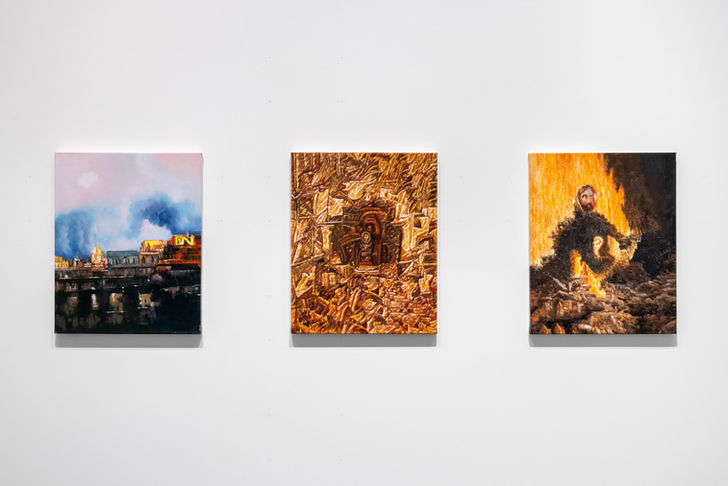Le travail des rêves
18 Rue du Bourg Tibourg, 75004 Paris
Feb 21, 2024

On February 21st, 2024, the collaborative efforts of Brightmoments, Galerie Bigaignon, and Darmo Art, unveiled to the public a new series of 100 "dream works" by aurèce vettier.
Depicting dreams has long been a practice that borders on something almost absurd. They are intricate, abstract, fragmented and mostly fleeting visuals manifested only in one person, and when shared with others they seem to take a step toward a more grounded existence. Perhaps this grounding of the ephemeral emphasises the intimacy of sharing dreams and, of course, makes them somewhat more real.
In le travail des rêves, aurèce vettier does exactly this. He invites the viewer to participate in his personal dreamscape, encouraging us to submerge ourselves in his memories, from childhood until current times. Though with an indication in the prompt used for its creation and in the title of each piece, the viewer is still left with space for interpretation. Furthermore, with the low resolution of the pieces, the viewer is forced to search their own memories and dreamscape and, perhaps, also reflect upon what dreams might symbolise.
In The Poetics of Space, Bachelard suggests that “[...] works of art are the by-products of this existentialism of the imagining being.”1 This quote seems relevant in the case of this series, as the depiction seems to allude to questions about the connection between life and dreams. Though by-products might have a negative connotation, it is in the case of le travail des rêves, meant with all well-meaning. The art created in this somewhat existentialist quest is poetic visuals that reflect on joyous as well as troubled and dark memories, and perhaps also what it means to be human.
This idea, of art as a by-product produced by ”existentialism of the imagining being”2 is also relevant when reflecting on the use of AI in the creation process. aurèce vettier’s use of it might seem like a simple approach to translating dreams into something materialistic. Still, the process behind it is much more intimate than what might first be considered. His work is based upon full control of it, built on not being reliant on the technology, but rather being able to steer it in whatever way he might wish. The technology works for him, and by sharing intimate memories and dreams with a custom text-to-image algorithm that he has trained, the project is fully personal - from start to finish. And as a result, aurèce vettier invites the viewer into a dreamscape that only he can create.
The sheer level of intimacy in this project and aurèce vettier unselfish sharing of the private sphere of his dreams creates a poetic result that, paradoxically, echoes the viewers' dreamscape and memories, blurring the lines of what belongs to him and what belongs to the viewer.
Stina Gustafsson
February 2024
















